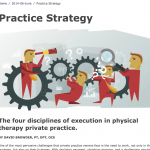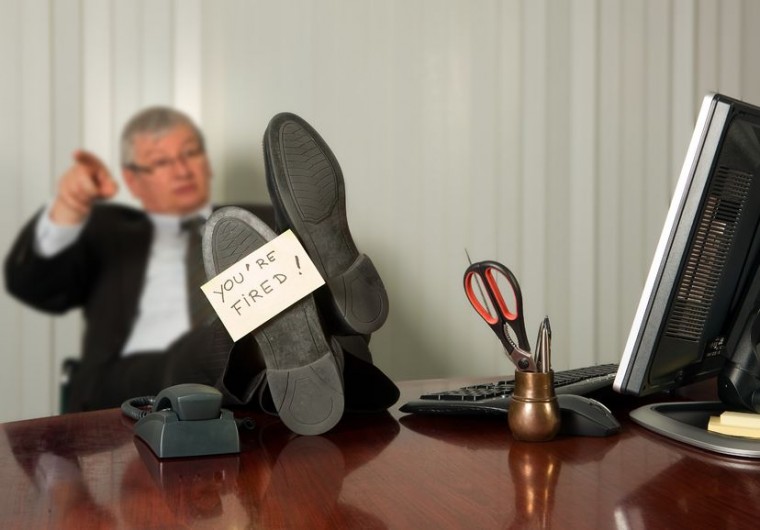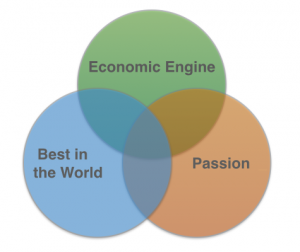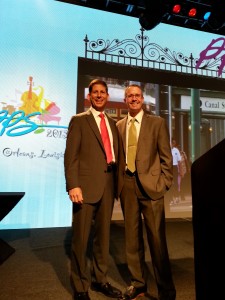
The team won’t play at their best unless they are emotionally engaged – and that happens when they can tell if they are winning or losing. – Chris McChesney
People work harder when they are keeping score. If you don’t believe this, just hold a competition around anything… fundraising, customer service survey results, even completion of compliance items. Games are a great way to engage your team, often with surprisingly effective results.
Here are three games you can play to meet common challenges in physical therapy private practice.
1) Ever find it hard to motivate your team to consistently perform marketing activities?
The featured image this week is an amazing scoreboard created by one of our teams to track a contest they held over the course of 3 months. All of the staff (including front desk personnel, therapists and aides) formed teams that competed to earn points. Each time a potential referral source was contacted in person (5 points), via phone (2 points), handwritten note (1 point), etc. the team advanced along the racetrack. The goal was for every team to complete the race to earn a clinic celebration. This not only became a team building exercise but this group generated more than 400 referral source contacts in a single quarter. All those contacts paid off; the following quarter they broke the clinic record for the number of new patients referred.
2) Ever felt like your social media efforts are stale and require too much effort?
Have a team halloween costume contest! Texas Physical Therapy Specialists’ annual halloween contest has a $300 first prize. Each team chooses a theme and creates a video that is uploaded to youtube and linked to on Facebook. Patients are encouraged to visit the Facebook age and vote for their favorites. This single event drives more traffic than any other during the year and engages the entire company in a fun, team building activity. The prize goes to a team celebration which creates even more camaraderie and social media content. Check out the 2013 winners!
 3) Want to fill Yelp! and Google Plus with positive reviews?
3) Want to fill Yelp! and Google Plus with positive reviews?
Place a laptop ready to go and have a staff member help patients leave reviews as they graduate. As a thank-you for participating patients choose a prize - a branded t-shirt, tumbler or coffee mug or enter them into a raffle for a larger prize. Create a scoreboard that tracks how many 5-star reviews your team has received with a celebration once the goal is achieved.
Set a goal, design a game and build a scoreboard. Friendly competition can be a great way to mobilize your team. I would love to hear about games you have played to drive your business forward - what is working for you?





 Stacy (not her real name) was a pretty good DOFI. DOFI stands for ‘Director of First Impressions’, a title shared by all of our front desk personnel. All the patients loved her and she took care of the data entry and scheduling portion of her job well enough. The downside was that she was often late and her ‘sick days’ tended to fall on the Friday before a 3-day weekend. I must have put up with a half-dozen ‘throat hurting’ and family emergencies (I think her grandmother died twice) and way too much aggravation before she finally pushed me over the edge. After a very dramatic sick call, she posted some great pics from the lake on Facebook! We let her go the next day, only to find out that she had been stealing co-pays from patients for on and off for over a year.
Stacy (not her real name) was a pretty good DOFI. DOFI stands for ‘Director of First Impressions’, a title shared by all of our front desk personnel. All the patients loved her and she took care of the data entry and scheduling portion of her job well enough. The downside was that she was often late and her ‘sick days’ tended to fall on the Friday before a 3-day weekend. I must have put up with a half-dozen ‘throat hurting’ and family emergencies (I think her grandmother died twice) and way too much aggravation before she finally pushed me over the edge. After a very dramatic sick call, she posted some great pics from the lake on Facebook! We let her go the next day, only to find out that she had been stealing co-pays from patients for on and off for over a year.










